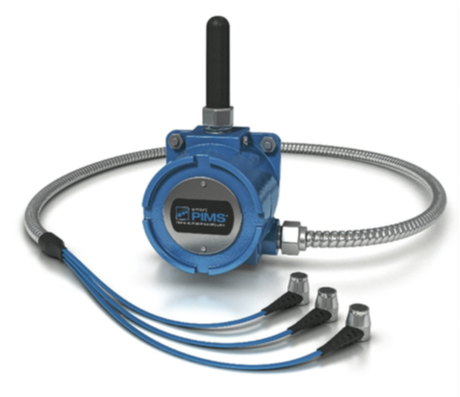Introduction
Metal loss due to corrosion and erosion is a widespread issue in the oil & gas and power generation industries for tanks, high-energy piping, pressure vessels, and other critical assets. Metal loss can lead to loss of pressure containment, which can result in serious consequences such as loss of life, damage to assets, disruption of service, environmental harm, damage to public image, and regulatory fines. As such, asset inspections are required by operators and are mandated in regulations and codes such as 29CFR–1910; API 570, ASME Sections V & XI, ASTM E797, and NACE’s IP 34101.
While there are many methods for measuring equipment wall thickness, a predominant method used in the O&G and power generation industries is portable ultrasonic equipment. Ultrasonic testing is non-intrusive because it is applied to the outside of a pipe or vessel. It is an accurate and relatively low cost non-destructive examination (NDE) method to deploy in most situations. However, it does have several shortcomings. Ultrasonic transducers or probes need to be applied in direct contact with the external surface of the pipe or vessel. This can require scaffolding, excavation, and stripping coatings or insulation. Thus, the cost of accessing the structure often far exceeds the basic cost of inspection. Furthermore, a trained and certified inspector is generally required to operate the ultrasonic instrumentation. In addition, ultrasonic testing sometimes requires personnel be exposed to potentially hazardous environments. The accuracy and repeatability of ultrasonic measurements are operator-dependent and recent studies have shown that the probability-of-detection (POD) can be poor1. Finally, the measurements are only performed periodically, taking a snap-shot of the plant condition.
Many end users are interested in investing in new technology to overcome these concerns. In the process industries, such as petrochemicals or refineries, critical process parameters are measured in real time. Information on vibration, flow, temperature, pressure, PH, equipment upsets, or unusual conditions is collected and reported on a continuing basis via key performance indicators or KPI’s. The automation of thickness measurements would alter the paradigm from the current manual/periodic measurements, to measuring thickness and corrosion rates as an on-line process for monitoring plant health variables, which can be used to optimize asset use and inspections.
A New Solution: Installed Ultrasonic Sensors
Installed ultrasonic sensors are emerging as a new technology to compete with manual UT (Ultrasonic Testing) inspections and existing corrosion-rate monitoring solutions. This is due to their potential for improved data quality, one time, non-invasive installation, and their ability to operate remotely without human interaction. As with UT thickness gauging, the solution is based on relatively simple ultrasonic principles.
A transducer that can convert electrical energy to high-frequency acoustic or ultrasonic energy and vice-versa is semi-permanently attached to the surface of the object or asset under test. The transit time between the initial electrical-excitation pulse and return echoes (or between echoes) is used to calculate wall thickness. Features such as the distance to the back-wall or the distance to a pit or crack can be measured with this technique. One must size and space the transducer appropriately to know the probability of finding a pit above a certain diameter.
Operationally, the installed-sensor solution is similar to manual thickness gauging. However, it is fundamentally different in that the transducers and instrumentation are deployed/installed semi-permanently. This addresses several of the shortcomings of existing solutions. Some of the major advantages are as follows:
- Instrumentation and probes are deployed on the asset in a permanent or semi-permanent fashion and can be accessed remotely. This reduces the cost of access over time as operators are not deployed to the point of the inspection. Once the instrumentation is installed, data can be reviewed from a convenient access point for the manual data collection option or can be accessed remotely, via the Internet, for integrated systems.
- Due to the fixed transducer position and instrumentation, operator-to-operator, probe-to-probe, and instrument-to-instrument, variability is eliminated. This removes significant sources of error and allows for improved measurement resolution, precision, and accuracy, which is particularly important for accurate corrosion-rate trending.
- Data can be collected on a more frequent basis (>1X per day) for automated systems. This allows for more frequent corrosion-rate trending through statistical data analysis, such as linear least squares regression, which in turn should lead to improved data accuracy.
- These types of systems can be deployed with an integrated temperature measurement device so that changes in material acoustic velocity due to temperature variation can be automatically removed from the measurement, thus eliminating another significant source of measurement error.
- The data is accessible. Wired and/or wireless installed sensor systems can make use of various forms of data backhaul, including the plant’s wired or wireless intranet, industrial wireless networks such as 802.15.4, (wireless HART, ISA100 or ZigBee), and satellite or cellular networks for remote collection points, allowing real-time data/asset health availability.




















Comments and Discussion
Add a Comment
Please log in or register to participate in comments and discussions.